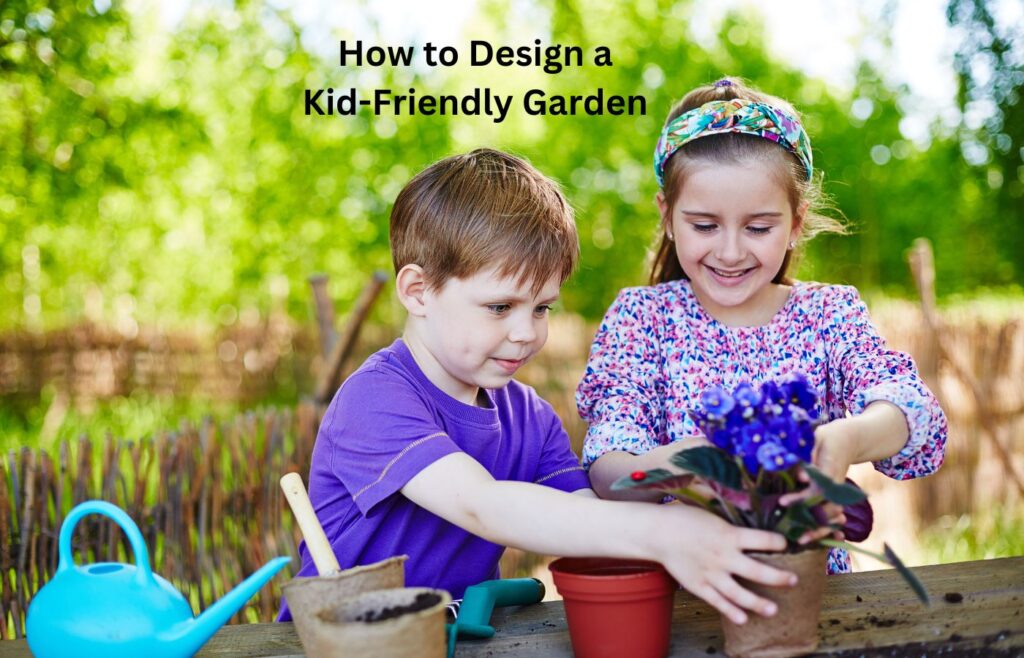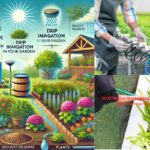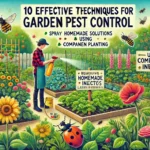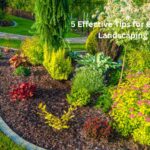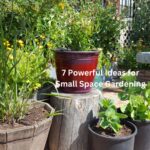Designing a kid-friendly garden is an exciting way to create a safe, engaging, and educational outdoor space for children to explore and enjoy nature. By incorporating interactive elements, selecting kid-safe plants, and fostering sensory experiences, you can transform your backyard into a vibrant fun-filled family-friendly outdoor space. This comprehensive guide will walk you through the essential steps to create a truly safe and engaging garden for children, promoting learning, discovery, and endless hours of outdoor adventure.
At the heart of a captivating kid-friendly garden is the ability to create a backyard oasis for kids that stimulates their curiosity, encourages exploration, and fosters a deep connection with the natural world. By carefully planning the layout, selecting appropriate plants, and incorporating interactive features, you can cultivate an outdoor haven that inspires children to learn, play, and grow.
Key Takeaways
- Designing a safe and engaging outdoor space for children is crucial for their development and well-being.
- Incorporating interactive elements, kid-safe plants, and sensory experiences can transform a backyard into a vibrant play area.
- Careful planning and attention to detail are essential in creating a truly kid-friendly garden that promotes learning and discovery.
- Fostering a connection between children and nature can have lasting benefits in terms of environmental stewardship and healthy habits.
- With the right approach, a backyard can be transformed into a family-friendly outdoor space that sparks imagination and adventure.
Creating a Safe and Engaging Outdoor Space
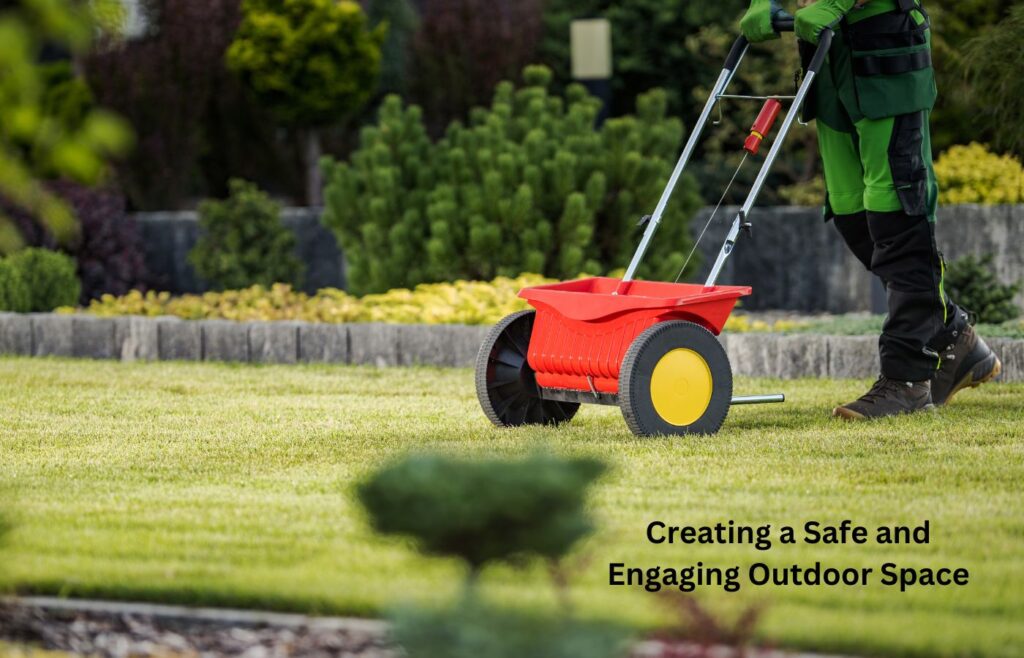
When designing a kid-friendly garden, safety should be the top priority. Childproof your garden area by installing fencing, removing any hazardous materials, and ensuring there are no sharp edges or potential fall risks. This will create a kid-safe outdoor space where children can explore and play without worry.
Incorporating Interactive Elements
To encourage hands-on learning and exploration, incorporate interactive garden features such as sensory play stations, musical chimes, and discovery stations. These elements will captivate children’s curiosity and foster a sense of wonder as they engage with the educational backyard elements around them.
Encouraging Exploration and Learning
Nurture children’s natural inquisitiveness by providing opportunities for them to investigate the natural world. Set up bug-watching stations, install bird feeders, and make magnifying glasses available to stimulate their senses and encourage scientific observation. This will transform your backyard into a childproof garden that promotes learning and discovery.
Planning the Layout and Zones
Carefully planning the layout and zoning of your kid-friendly garden is crucial to creating a cohesive and functional outdoor space. By designating specific areas for different activities and incorporating thoughtful pathways and seating, you can enhance the overall experience for children exploring your backyard oasis.
Designating Play Areas

Dedicate distinct zones within your garden layout for various play activities. Consider setting aside a sandbox or digging area where children can engage in imaginative and tactile exploration. Incorporate a climbing structure or open grassy space for active play, allowing young adventurers to burn off energy and unleash their creativity. These designated garden layout for kids will help organize the space and ensure that children have ample opportunities for both independent and collaborative play.
Including Pathways and Seating

Weave kid-friendly paths and seating throughout your garden to encourage exploration and rest. Create meandering paths that invite children to discover hidden nooks and observe the surrounding designated play zones. Strategically place benches, picnic tables, or naturalistic seating areas where little ones can take a break, enjoy a snack, or simply observe the wonders of the garden.
| Design Element | Purpose | Examples |
|---|---|---|
| Garden Layout for Kids | Organizing outdoor space for various activities | Sandbox, climbing structure, open grassy area |
| Designated Play Zones | Specific areas for different types of play | Active play, imaginative exploration, sensory engagement |
| Kid-Friendly Paths and Seating | Encouraging exploration and rest | Meandering paths, benches, picnic tables |
Selecting Kid-Friendly Plants

When creating a captivating kid-friendly garden, the selection of plants is of paramount importance. It’s crucial to choose non-toxic and hardy varieties that can withstand the curious exploration of young hands. By incorporating safe plants for kids, you can ensure a worry-free and engaging outdoor space for your little ones to discover and enjoy.
Non-Toxic and Hardy Plant Choices
Prioritize plants that are not only visually appealing but also safe for children to handle. Some excellent options include sunflowers, marigolds, and geraniums – hardy and vibrant flowers that can withstand the enthusiastic touch of little fingers. Additionally, consider including plants like lavender, rosemary, and sage, which offer interesting textures and calming scents to captivate young senses.
Edible Gardens and Herb Patches
To foster a deeper connection between children and the natural world, incorporate edible plants into your kid-friendly garden. Grow a variety of fruits, vegetables, and herbs that children can actively engage with, from planting the seeds to harvesting the bounty. Edible gardens and kid-friendly herb patches not only encourage healthy eating habits but also spark a sense of wonder and pride as children witness the growth and transformation of their own edible oasis.
Incorporating Fun and Engaging Features
To create a truly captivating kid-friendly garden, incorporate fun and engaging features that inspire imagination and active play. Thoughtfully designed elements can transform your outdoor space into a vibrant, interactive playground where children can explore, discover, and unleash their creativity.
Sandboxes and Digging Pits
Install a sandbox or digging pit where children can dig, build, and explore the wonders of texture and texture. These hands-on play areas allow kids to get their hands dirty while developing important sensory and motor skills. Encourage creative construction by providing shovels, pails, and other sandbox-friendly tools.
Water Features and Fountains
Include water features, such as a shallow fountain or splash pad, to encourage sensory exploration. The sights, sounds, and tactile experiences of water can captivate children and spark their natural curiosity. Ensure the water feature is safe and accessible, with gentle, low-flow designs that allow little ones to investigate without risk.
Playhouses and Climbing Structures
Incorporate playhouses, climbing structures, and other interactive elements that allow children to engage with the garden in creative ways. These engaging features foster imaginative play, physical activity, and a sense of adventure. Choose age-appropriate equipment that challenges kids while prioritizing safety and supervision.
| Fun Garden Features | Benefits for Kids |
|---|---|
| Sandbox and Digging Pit | Develop sensory and motor skills, encourage creative construction |
| Water Features and Fountains | Spark curiosity, provide sensory exploration, promote imaginative play |
| Playhouses and Climbing Structures | Foster imaginative play, physical activity, and a sense of adventure |
Creating a Kid-Friendly Garden
Designing a kid-friendly garden is a holistic process that combines safety, educational elements, and engaging features to create a truly captivating outdoor space for children. By carefully planning the layout, selecting appropriate plants, and incorporating interactive elements, you can transform your backyard into a vibrant, safe, and fun-filled play area that encourages exploration, learning, and a deep connection with nature.
The key to creating a successful kid-friendly garden lies in striking a balance between safety precautions and stimulating design. Start by childproofing your garden area, ensuring that any potential hazards are addressed and that the space is secure for young adventurers. Incorporate interactive features such as sensory play stations, musical chimes, and discovery zones to spark children’s curiosity and foster hands-on learning.
Thoughtful garden layout and zoning are also essential components of a kid-friendly outdoor space. Designate specific areas for active play, such as a sandbox or climbing structure, while including calmer zones for rest and observation. Winding paths and comfortable seating invite children to explore and engage with the garden at their own pace.https://digitamizer.com/gardening-as-an-alternative-to-traditional-therapy/
By carefully selecting kid-safe and hardy plants, you can create a visually stunning and tactilely engaging outdoor environment for children. Include edible plants, like fruits and vegetables, to encourage children’s interest in healthy eating and sustainable gardening practices. Incorporate a variety of textures, colors, and fragrances to stimulate the senses and foster a deeper connection with nature.
Ultimately, designing a kid-friendly garden is a rewarding process that allows you to create a safe, interactive, and educational outdoor space for children to thrive. By considering safety, incorporating engaging features, and fostering a love for nature, you can transform your backyard into a vibrant play area that will captivate and inspire young minds for years to come.
Fostering Sensory Experiences
Designing a kid-friendly garden is not just about creating a safe and engaging play area; it’s also about fostering sensory experiences that stimulate children’s curiosity and delight. By incorporating a variety of textures and fragrances, you can encourage sensory garden for kids to explore the natural world around them.
Incorporating Textures and Fragrances
Incorporate a diverse range of textures, such as rough bark, soft leaves, and squishy moss, to allow children to experience the tactile qualities of the plants in their children’s gardens. These varied textures will encourage hands-on exploration and help children develop a deeper understanding of the natural world.
In addition to textures, include fragrant plants like herbs and flowers to engage children’s sense of smell. The aromatic scents of lavender, rosemary, or honeysuckle can inspire natural discovery and spark children’s interest in the plants around them.
Encouraging Tactile Exploration
Designate specific areas within the garden for tactile exploration, where children can touch, feel, and manipulate the various materials and surfaces. Create a sensory garden that invites them to run their fingers through the soft petals of flowers, squeeze the squishy leaves of succulents, and brush their hands against the rough bark of trees.
By fostering these sensory experiences, you can help children develop a deeper connection with the natural world and ignite their curiosity about the textures and fragrances in their outdoor environment.
Maintaining a Safe and Sustainable Garden
Maintaining a kid-friendly garden requires a thoughtful approach to ensure the ongoing safety and sustainability of the outdoor space. By utilizing organic pest control methods and implementing responsible water usage practices, you can create a thriving and eco-friendly environment for children to explore and enjoy.
Organic Pest Control Methods
To keep your kid-friendly garden free from harmful chemicals, consider incorporating organic pest control methods such as companion planting and natural repellents. Companion planting, where you strategically place certain plants next to each other, can help deter pests without the need for synthetic pesticides. Natural repellents, like essential oils or garlic-based sprays, can also be effective in managing pests in children’s gardens without exposing them to potentially hazardous substances.
Responsible Water Usage
Conserving water is crucial for maintaining a sustainable kid-friendly garden. Implement practices like drip irrigation and rainwater harvesting to ensure efficient and responsible water usage. Drip irrigation systems deliver water directly to the roots of plants, minimizing evaporation and waste, while rainwater harvesting allows you to collect and utilize natural precipitation to nourish your garden.
Involving Kids in Garden Maintenance
Engaging children in the maintenance of their outdoor play area is not only a valuable learning experience but also helps foster a sense of ownership and responsibility. Teach them about the importance of caring for the environment and their garden space by involving them in tasks like watering, weeding, and monitoring for pests. This hands-on approach encourages kids to participate in the care of their garden and develop a deeper appreciation for the natural world around them.
Designing for Different Age Groups
When designing a kid-friendly garden, it’s essential to consider the needs and interests of different age groups. By creating targeted spaces that cater to the unique developmental stages of toddlers and older children, you can ensure an engaging and enriching outdoor experience for the entire family.
Toddler-Friendly Spaces
For the youngest garden explorers, focus on constructing toddler-safe outdoor spaces that prioritize safety and sensory stimulation. Incorporate soft, low-lying features, such as cushioned play mats and rounded edges, to prevent injuries. Curate a diverse selection of textured ground cover, from plush artificial grass to spongy mulch, to encourage tactile exploration. Additionally, include engaging sensory elements like musical chimes, interactive water features, and vibrant, non-toxic plants that captivate toddlers’ developing senses.
Engaging Older Children
As children grow older, their need for physical challenge and imaginative play increases. Incorporate engaging outdoor areas for older children that offer a balance of safe risk-taking and creative expression. Install challenging yet age-appropriate play structures, such as climbing walls, slides, and balance beams, to foster gross motor skills and a sense of adventure. Create hidden nooks and secret hideaways where children can engage in imaginative role-play and storytelling. Complement these play spaces with educational stations that encourage scientific observation, hands-on learning, and a deeper connection to the natural world.
| Age Group | Key Design Considerations | Recommended Features |
|---|---|---|
| Toddlers | Safety and sensory stimulation Tactile exploration Developing senses | Soft, low-lying features Diverse textured ground cover Engaging sensory elements |
| Older Children | Physical challenge Imaginative play Educational opportunities | Challenging play structures Hidden nooks and secret hideaways Educational stations |
Incorporating Educational Elements
A truly exceptional kid-friendly garden not only provides a safe and engaging play area but also fosters learning and environmental stewardship. To achieve this, incorporate educational elements that teach children about the importance of nature and sustainability.
Teaching About Nature and Sustainability
Begin by including informative signage that explains the various plants, wildlife, and natural processes found within the garden. Encourage children to participate in nature-themed scavenger hunts, where they can explore the garden and learn about the different species of flora and fauna. Hands-on activities, such as composting workshops or seed-planting demonstrations, can help kids understand the principles of sustainability and their role as caretakers of the environment.
Encouraging Scientific Observation
To foster a love for scientific exploration, set up dedicated stations for bird-watching, bug-catching, and plant identification. Provide children with magnifying glasses, field guides, and other tools that will enable them to closely observe the natural world around them. By encouraging scientific observation, you can ignite their curiosity and help them develop a deeper appreciation for the intricate ecosystems that exist within the garden.
Creating Outdoor Art and Craft Spaces
To further encourage creativity and self-expression, designate outdoor art and craft spaces within your kid-friendly garden. This not only allows children to explore their artistic talents but also fosters a sense of exploration and hands-on learning.
Designated Messy Areas
Create a dedicated “messy” area with chalkboards, easels, and mud/water play stations. This provides a safe and contained space for children to engage in spontaneous art projects, experiment with different mediums, and embrace the joys of getting a little dirty. Embrace the mess and let their imaginations run wild!
Incorporating Recycled Materials
Encourage sustainable practices and spark creativity by incorporating recycled materials into your kid-friendly garden. Transform upcycled planters, found objects, and natural elements into whimsical wind chimes, nature-inspired crafts, and one-of-a-kind garden accessories. This not only promotes environmental awareness but also inspires children to see the potential in everyday items.
FAQ
What are some key considerations when designing a kid-friendly garden?
When designing a kid-friendly garden, the top priorities are ensuring safety, incorporating interactive elements, and fostering educational and sensory experiences. This includes childproofing the garden area, selecting non-toxic and hardy plants, and including features like sandboxes, water elements, and climbing structures.
How can I create designated play areas in the garden?
Carefully plan the layout and zoning of your kid-friendly garden to include specific areas for active play, such as a sandbox, open grassy space, or climbing structure. Include winding paths and seating areas that invite children to explore and observe the garden’s features.
What types of plants are safe and suitable for a children’s garden?
When selecting plants, choose non-toxic and hardy varieties that can withstand the curiosity of young hands. Consider including edible plants, such as fruits, vegetables, and herbs, to encourage children’s interest in growing and tasting healthy foods. Incorporate sensory-rich plants that offer different textures, colors, and scents.
How can I incorporate fun and engaging features into the garden?
To create a truly captivating kid-friendly garden, include features that inspire imagination and active play, such as sandboxes, water features, playhouses, and climbing structures. These interactive elements allow children to engage with the space in creative ways and explore their surroundings.
What types of sensory experiences can I incorporate into the garden design?
Fostering sensory experiences is key to a kid-friendly garden. Incorporate a variety of textures, such as rough bark, soft leaves, and squishy moss, to encourage tactile exploration. Include fragrant plants, like herbs and flowers, to engage children’s sense of smell and inspire natural discovery.
How can I maintain a safe and sustainable garden for children?
Maintaining a kid-friendly garden requires a thoughtful approach to ensure ongoing safety and sustainability. Utilize organic pest control methods, implement responsible water usage practices, and engage children in the garden maintenance process to teach them about the importance of caring for the environment.
How can I design the garden to cater to different age groups?
When designing a kid-friendly garden, consider the needs and interests of different age groups. Create toddler-friendly spaces with soft, low-lying features and engaging sensory elements. For older children, incorporate challenging yet safe play structures, hidden nooks for imaginative play, and educational stations that encourage scientific observation and hands-on learning.
What educational elements can I incorporate into the garden design?
A truly exceptional kid-friendly garden should foster learning and environmental stewardship. Incorporate educational elements, such as informative signage, nature-themed scavenger hunts, and hands-on activities, to teach children about the importance of sustainability, the natural world, and their role as caretakers of the environment.
How can I create outdoor art and craft spaces within the garden?
To encourage creativity and self-expression, designate outdoor art and craft spaces within your kid-friendly garden. Create a dedicated “messy” area with chalkboards, easels, and mud/water play stations to allow children to explore their artistic talents. Incorporate recycled materials, such as upcycled planters and nature-inspired crafts, to spark the imagination and promote sustainable practices.
The article “How to Design a Kid-Friendly Garden” is written by Farhanul Haque, HomeGardenIdeas.com. Our team of passionate writers and experts shares tips and inspiration on gardening, home improvement, and design to help you create your dream space.

